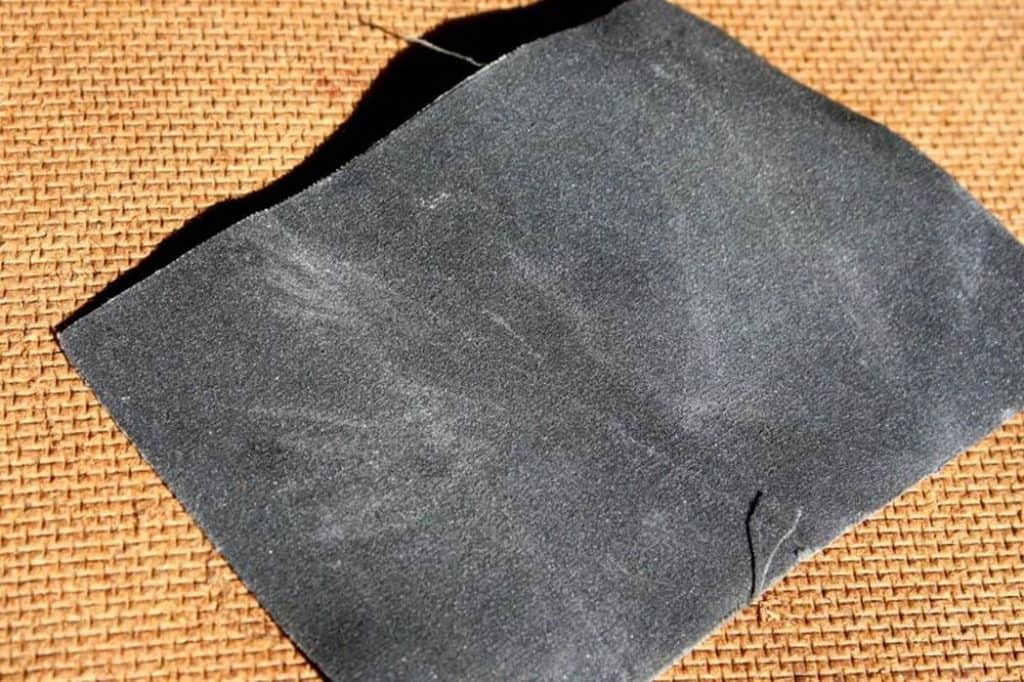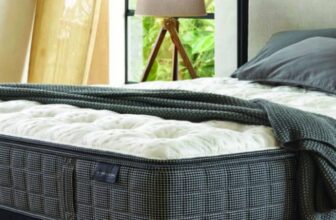What Kind of Sandpaper Do You Use on Metal?
If you’re someone who enjoys home DIY projects and likes to take care of things around the house by yourself, you most likely had to work with metal, at least in some situations.
Of course, the projects involving metal require previous preparation of the surface, especially if you plan to paint it.
No matter if you have to just remove some old paint from the metal, deal with the stubborn rust, or even out-scratched parts of the surface, you will probably use sandpaper.
Sanding is likely the best way to clean and smooth out the metal surface and prepare it for finishing or painting.
It’s simple, not particularly time-consuming, and you can do it by yourself.
However, using the wrong sandpaper can easily cause unrepairable damage to metal surfaces.
Below, I’ll answer in depth what kind of sandpaper do you use on metal and explain the best ways to do it.
So, let’s dive into it!
Table of Contents
What Kind of Sandpaper Do You Use on Metal?
Sanding metal requires extra caution and careful consideration of what kind of sandpaper to use.
The wrong type of sandpaper can easily scratch metal, and these kinds of imperfections can be very difficult, or sometimes even impossible, to remove.
Scratches on metal surfaces are much harder to even out or cover up than on wood, for example.
Therefore, it’s of the utmost importance to ensure you make an informed decision when choosing sandpaper for a metal sanding job.
Various kinds of sandpaper differ in grit size numbers, level of coarseness, grit type, and backing material.
Of course, all this can be a bit confusing, especially if it’s your first time sanding metal.
To help out, I’ll go through each of these sandpaper types and explain which one works best for metal.
The Grit Type
Certain types of grit have specific characteristics and are, therefore, better for certain surfaces and materials.
What works on wood may not be that good for sanding metal.
Below are the most common types of grit materials, along with an explanation of how effective they are in working with metal.
Flint
Flint is a natural grain material, often used for grit intended for sanding off stubborn old paint or varnish on various surfaces.
As it’s relatively cheap, it’s a popular option for removing different sticky substances, including paint, from metal surfaces.
Still, be aware that, when used on metal, the flint grit dulls rather quickly.
Emery
Another natural grain, emery is one of the most popular types of grit used for dealing with corrosion and rust from metal, or polishing and striping metal surfaces.
Emery Sandpaper can be used for both dry and wet sanding applications and commonly comes with a cloth backing to make the sandpaper last longer.
Still, similar to flint, emery can wear out rather quickly.
Garnet
Garnet is also a natural grain material like emery and flint, but softer than the previous two grit types.
This means that it’s more suited for light and finer work. It’s rarely used for metal surfaces, as it will wear out fast.
It’s mostly used for sanding wood, but can be useful if you want a finer finish on your metal surfaces.
Zirconia Alumina
Unlike previously mentioned grit types, Zirconia Alumina is a synthetic material, made with a mixture of Aluminum Oxide and Zircon.
It’s very durable and works great for grinding away burrs and rough edges of metal.
Another advantage of Zirconia Alumina is that the grit gets sharper the longer you sand metal. This means that you will be able to use the same sandpaper for a fairly long period of time.
Aluminum Oxide
Aluminum Oxide is similar to Zirconia Alumina in durability and is a proper workhorse for all your metal sanding needs.
It has multiple applications but is most commonly used for sanding, polishing, and stripping various metal materials, including alloy steel and bronze.
It’s suitable for use both for hand and power sanding.
What makes Aluminum Oxide even more useful is that it’s available with waterproof backing.
This practically means that you can use moist sandpaper for wet sanding which is the base way to achieve a perfectly smooth surface.
Just like Zirconia Alumina, Aluminum Oxide grit also sharpens its edges under pressure, allowing for more durability for the same sandpaper.
Silicon Carbide
Silicon Carbide is known to be the most durable of all synthetic abrasives used for sandpaper grit.
It works for all kinds of surfaces, including metal. It’s particularly helpful for preparing metal for a painting job.
It can be used to sand metal before repainting, sand the surface between two coats, or to further polish smooth surfaces before adding a primer coat.
Furthermore, it’s another grit type that features waterproof backing, so you can freely use it for both dry and wet sanding.
Silicon Carbide can even be used for wet sanding with oil to make it more durable and reduce clogging.
Ceramic Sandpaper
Synthetic and reddish-brown, ceramic sandpaper is considered to feature the hardest and the sharpest type of grit.
These characteristics make it perfect for projects that require especially rough sanding.
At the same time, it’s best to avoid if the job requires sanding the more sensitive surface, where smoothness and minimal scratching are of importance.
In addition to being sharp and hard, ceramic sandpaper is also the most durable type and will last approximately four to six times longer than other kinds of sandpaper.
Grit Size and Coarseness

Sandpaper is made of fine abrasive particles, made from either natural or synthetic materials.
These particles, also referred to as grit, can come in different sizes, each suitable for different kinds of jobs.
The grit size is determined based on the gradation scale, established by CAMI (Coated Abrasive Manufacturers Institute).
Numbers indicating grit sizes, such as 80-grit or 200-grit, are clearly displayed on the sandpaper packaging.
Higher Grit Numbers
Higher grit numbers, which indicate smaller particles and less coarse sandpaper, are not perfect for removing significant imperfections from the metal surface but are great for finer polishing.
Grit sizes of 220 and above will be able to tackle only small and less severe build-ups of rust.
They’re useful for light sanding, or eventually, evening-out scratches made with more coarse sandpaper.
This makes them perfect for more sensitive metal surfaces, such as those found on furniture or other pieces of home decor.
Note that using finer sandpaper will require a bit more work as it takes longer to remove imperfections with higher grit numbers.
Medium Grit Numbers
Medium grit number, from 100 to 180 will remove the rust faster than the finer grit, but is not recommended for surfaces you don’t want to see damaged or scratched.
These types of sandpaper serve great on larger metal appliances or as a starting point and a quick way to remove rust on projects that will include further surface preparation.
Lower Grit Numbers
Lower grit numbers, from 40 to 80, indicate sandpaper that is more coarse, with larger abrasive particles.
It’s the best option if you only care about removing rust or other imperfections and are not too concerned about scratches that sanding may cause.
Needless to say, it’s not recommended for metal pieces such as furniture, antiques, or home appliances.
On the other hand, it’s very efficient and will get the job done quickly when it comes to removing rust from metal pipes or heavy machinery.
Sandpaper Backing Material
I already talked a bit about sandpaper backing material and its importance.
The backing material impacts the sandpaper’s durability and flexibility, so you should choose depending on the needs of your project.
There are two basic types of sandpaper backing material: paper and cloth.
- Paper backing is made in four different weights: A, C, D, and E. A type is the lightest, while E is the heaviest. More weight means that the sandpaper is more suitable for rough sanding, while the lighter backing provides more flexibility. The sandpaper with heavier backing is also more durable.
- Cloth backing also comes in four different weights: Y, X, J, and F. This is also the order of the stiffness, with Y and X being the stiffest, designed for heavy-duty use and particularly rough sanding jobs. J and F are lighter and more flexible and therefore used for projects that require those features.
Conclusion
If you’re not 100% sure of what kind of sandpaper do you use on metal, it’s easy to make mistakes. As you know, there are various types of sandpaper with specific intended uses.
Metal scratch very easily, so you can do more damage than good if using the wrong kind of sandpaper.
Selecting the proper grit count and the right type and material of sandpaper is the only way to ensure that the integrity of the metal surface is preserved.
While your goal is to polish the surface, remove rust or old paint, or deburr an edge, using the sandpaper that’s not right for the job will only fail to do that, but leave irreversible scratch marks that are not easy to even out or cover up.
On the other hand, proper sandpaper will make the entire surface of the metal piece smooth and have it prepared for whatever you’ve planned next.



















































































